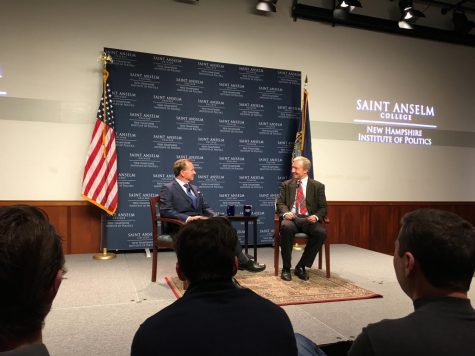Thanksgiving joy for lots of folks, but on the farm, smiles are few
November 28, 2018
It is no secret that the true roots of the Thanksgiving holiday are far different from the happy fantasy version of the pilgrims reaching a compromise with the Native Americans and sitting down for a delicious meal together.
That’s probably why I’m not mad about stores skipping straight to Christmas right after Halloween. If stores break out Christmas décor prior to the end of October, however, that’s a little much.
Still, it is good to reshape the holiday (similar from the change from Columbus Day to Indigenous People’s Day) to honor and recognize Native American traditions, with November also being Native American Heritage month.
It is also a positive change to make Thanksgiving season a season of service and making sure that everyone has access to a meal.
Since Thanksgiving is centralized around a meal that is essentially the same year by year, it’s interesting to see what changes. This year was pretty significant, as turkey prices have decreased to the extent that they are now at a ten-year low.
A professor from Purdue, a major meat supplier, has reported that turkey prices this year are about only $1.45 per pound. The low prices are due to the ripple effect caused from the low cost of turkey feed, which is mainly corn and soybeans. The availability of more feed allowed for the population growth of turkeys.
Although low food prices seem very desirable and a way to make food more accessible, they can hurt farmers as well as consumers.
Corn is agriculturally subsidized, which means that if the price drops a certain amount, the government compensates farmers with the price difference of what they lost. Therefore, farmers are encouraged to produce more corn than necessary, and prices are driven further down.
Food processors use corn in everything—notice how snacks and juice will sometimes advertise that they contain “no high fructose corn syrup.”
Corn is also used frequently in animal feed and constitutes most of the diet of turkeys.
Corn is mainly used as the food base since it’s affordable, but it really is not the healthier option. Similar to cows, turkeys would do much better on a diet of grass.
Meat from animals raised on grass have high levels of antioxidants such as vitamin E, beta carotene (which is also in pumpkins), vitamin C, and Omega-3 fatty acids.
If a turkey is pastured, it means that they were able to roam around and have a semi-normal captive turkey life, rather than the factory turkey that is basically kept locked up and away from the light all day.
A positive of lower prices for run-of-the mill turkeys is that they may have encouraged families to buy locally-sourced and organic turkeys that were grass-fed.
Of course, everything that is healthier for you is automatically more expensive. That’s probably due to grass being more limited than corn, which could be corrected by farmers focusing on cultivating more grass rather than just more corn.
Again, the government would have to subsidize it. It would be better to make Thanksgiving turkeys more natural, not only for the health benefits, but to move away from the dangerous American mindset of production amounts over quality.
Thanksgiving is a good opportunity to reflect on gratitude and give back to the community. That way, Thanksgiving isn’t just based around food and consumerism.
Saint Anselm College is a very good role model of this, as many clubs and organizations collected food for Thanksgiving baskets that were distributed throughout the community.
Thanksgiving is a good opportunity to spend time with family, engage in service, and enjoy delicious Saint Anselm pies, cheesecakes, and breads from the sale. I hope that everyone enjoyed their break and a brief respite before things get crazy again with finals.









